Abstract
A method is described for calculating the reaction rate in globular proteins of activated processes such as ligand binding or enzymatic catalysis. The method is based on the determination of the probability that the system is in the transition state and of the magnitude of the reactive flux for transition-state systems. An "umbrella sampling" simulation procedure is outlined for evaluating the transition-state probability. The reactive flux is obtained from an approach described previously for calculating the dynamics of transition-state trajectories. An application to the rotational isomerization of an aromatic ring in the bovine pancreatic trypsin inhibitor is presented. The results demonstrate the feasibility of calculating rate constants for reactions in proteins and point to the importance of solvent effects for reactions that occur near the protein surface.
Full text
PDF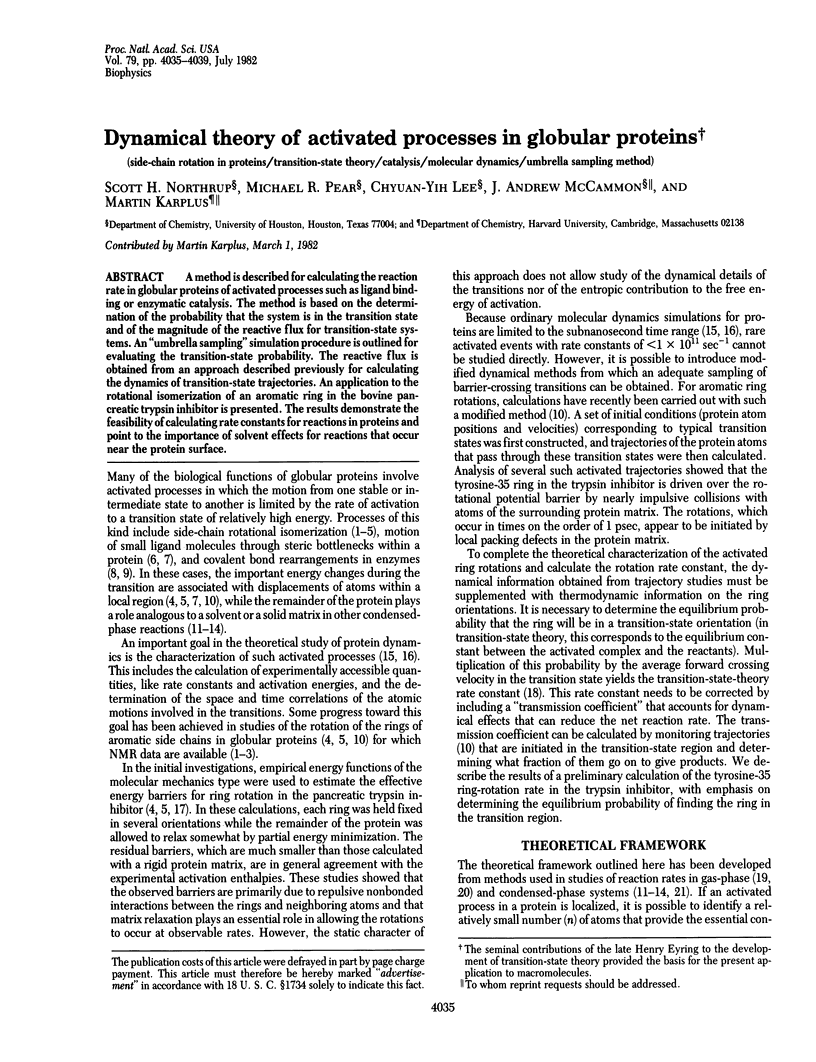
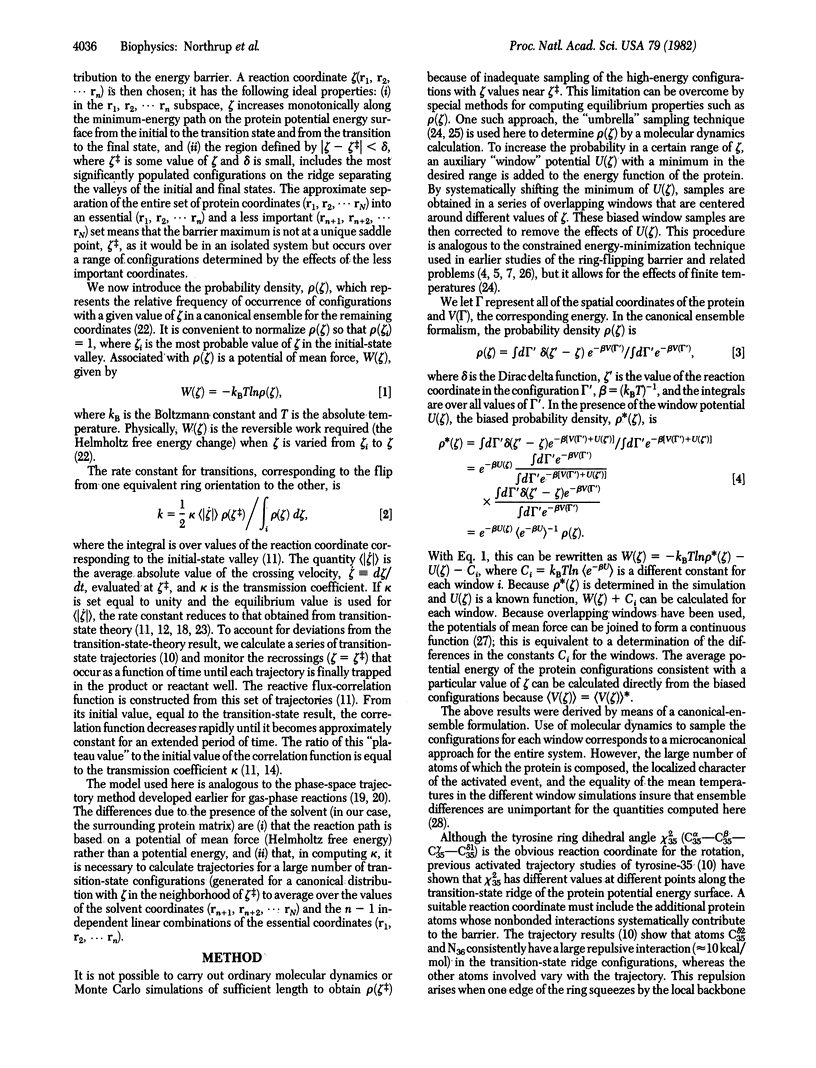
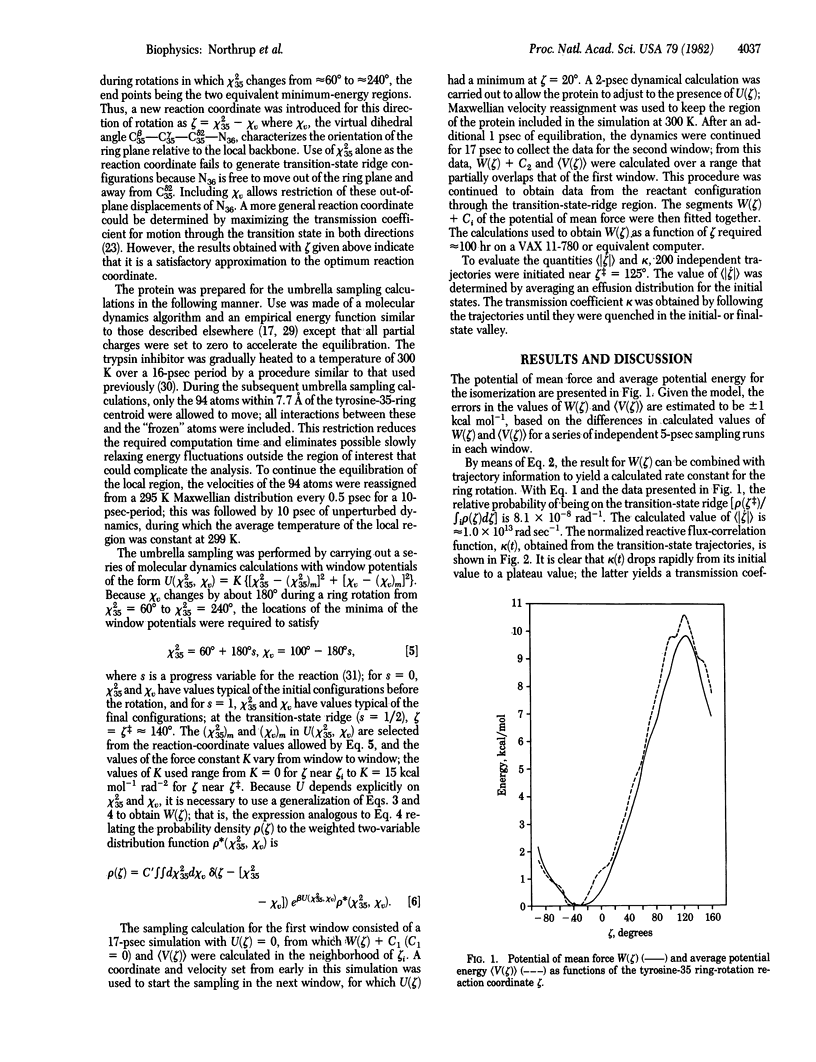
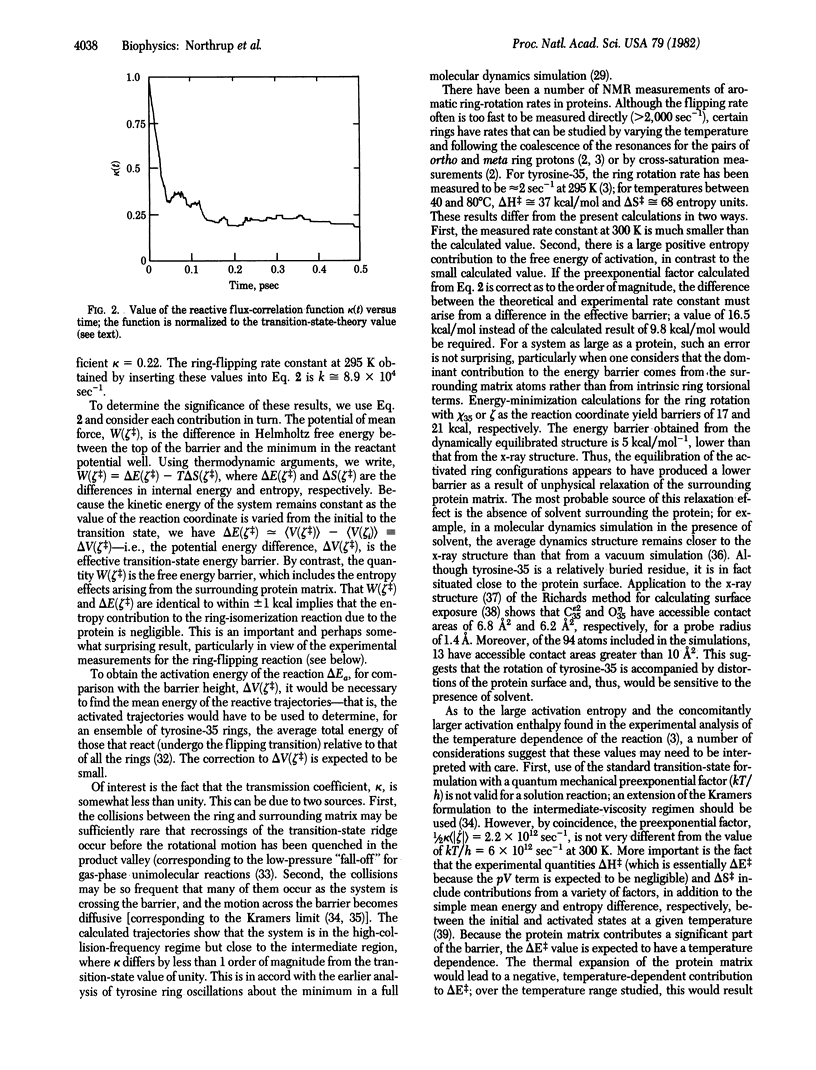
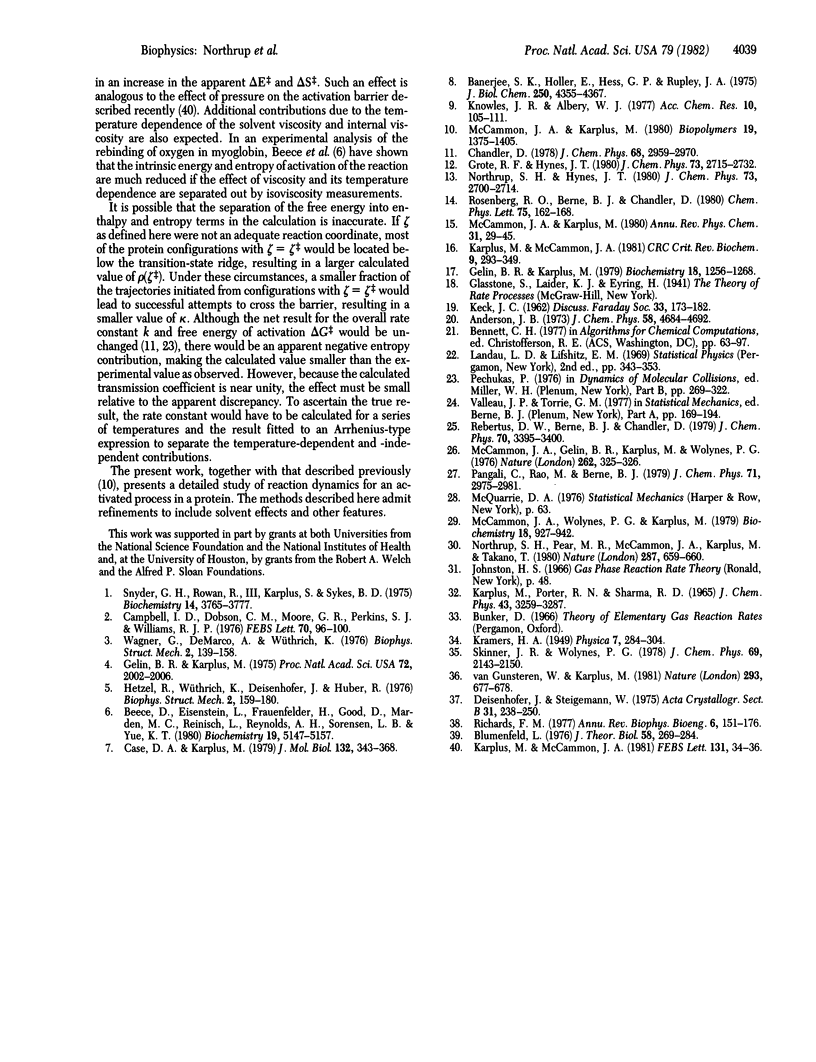
Selected References
These references are in PubMed. This may not be the complete list of references from this article.
- Banerjee S. K., Holler E., Hess G. P., Rupley J. A. Reaction of N-acetylglucosamine oligosaccharides with lysozyme. Temperature, pH, and solvent deuterium isotope effects; equilbrium, steady state, and pre-steady state measurements*. J Biol Chem. 1975 Jun 10;250(11):4355–4367. [PubMed] [Google Scholar]
- Beece D., Eisenstein L., Frauenfelder H., Good D., Marden M. C., Reinisch L., Reynolds A. H., Sorensen L. B., Yue K. T. Solvent viscosity and protein dynamics. Biochemistry. 1980 Nov 11;19(23):5147–5157. doi: 10.1021/bi00564a001. [DOI] [PubMed] [Google Scholar]
- Blumenfeld L. A. The physical aspects of enzyme functioning. J Theor Biol. 1976 May 21;58(2):269–284. doi: 10.1016/s0022-5193(76)80120-8. [DOI] [PubMed] [Google Scholar]
- Campbell I. D., Dobson C. M., Moore G. R., Perkins S. J., Williams R. J. Temperature dependent molecular motion of a tyrosine residue of ferrocytochrome C. FEBS Lett. 1976 Nov;70(1):96–100. doi: 10.1016/0014-5793(76)80734-x. [DOI] [PubMed] [Google Scholar]
- Case D. A., Karplus M. Dynamics of ligand binding to heme proteins. J Mol Biol. 1979 Aug 15;132(3):343–368. doi: 10.1016/0022-2836(79)90265-1. [DOI] [PubMed] [Google Scholar]
- Gelin B. R., Karplus M. Side-chain torsional potentials: effect of dipeptide, protein, and solvent environment. Biochemistry. 1979 Apr 3;18(7):1256–1268. doi: 10.1021/bi00574a022. [DOI] [PubMed] [Google Scholar]
- Gelin B. R., Karplus M. Sidechain torsional potentials and motion of amino acids in porteins: bovine pancreatic trypsin inhibitor. Proc Natl Acad Sci U S A. 1975 Jun;72(6):2002–2006. doi: 10.1073/pnas.72.6.2002. [DOI] [PMC free article] [PubMed] [Google Scholar]
- Hetzel R., Wüthrich K., Deisenhofer J., Huber R. Dynamics of the aromatic amino acid residues in the globular conformation of the basic pancreatic trypsin inhibitor (BPTI). II. Semi-empirical energy calculations. Biophys Struct Mech. 1976 Aug 23;2(2):159–180. doi: 10.1007/BF00863707. [DOI] [PubMed] [Google Scholar]
- Karplus M., McCammon J. A. The internal dynamics of globular proteins. CRC Crit Rev Biochem. 1981;9(4):293–349. doi: 10.3109/10409238109105437. [DOI] [PubMed] [Google Scholar]
- McCammon J. A., Gelin B. R., Karplus M., Wolynes P. G. The hinge-bending mode in lysozyme. Nature. 1976 Jul 22;262(5566):325–326. doi: 10.1038/262325a0. [DOI] [PubMed] [Google Scholar]
- McCammon J. A., Wolynes P. G., Karplus M. Picosecond dynamics of tyrosine side chains in proteins. Biochemistry. 1979 Mar 20;18(6):927–942. doi: 10.1021/bi00573a001. [DOI] [PubMed] [Google Scholar]
- Northrup S. H., Pear M. R., McCammon J. A., Karplus M., Takano T. Internal mobility of ferrocytochrome c. Nature. 1980 Oct 16;287(5783):659–660. doi: 10.1038/287659a0. [DOI] [PubMed] [Google Scholar]
- Richards F. M. Areas, volumes, packing and protein structure. Annu Rev Biophys Bioeng. 1977;6:151–176. doi: 10.1146/annurev.bb.06.060177.001055. [DOI] [PubMed] [Google Scholar]
- Snyder G. H., Rowan R., 3rd, Karplus S., Sykes B. D. Complete tyrosine assignments in the high field 1H nuclear magnetic resonance spectrum of the bovine pancreatic trypsin inhibitor. Biochemistry. 1975 Aug 26;14(17):3765–3777. doi: 10.1021/bi00688a008. [DOI] [PubMed] [Google Scholar]
- Wagner G., DeMarco A., Wüthrich K. Dynamics of the aromatic amino acid residues in the globular conformation of the basic pancreatic trypsin inhibitor (BPTI). I. 1H NMR studies. Biophys Struct Mech. 1976 Aug 23;2(2):139–158. doi: 10.1007/BF00863706. [DOI] [PubMed] [Google Scholar]
- van Gunsteren W. F., Karplus M. Effect of constraints, solvent and crystal environment on protein dynamics. Nature. 1981 Oct 22;293(5834):677–678. doi: 10.1038/293677a0. [DOI] [PubMed] [Google Scholar]


